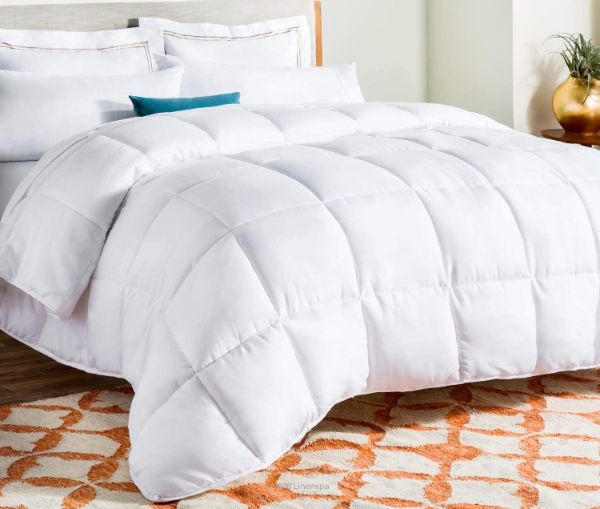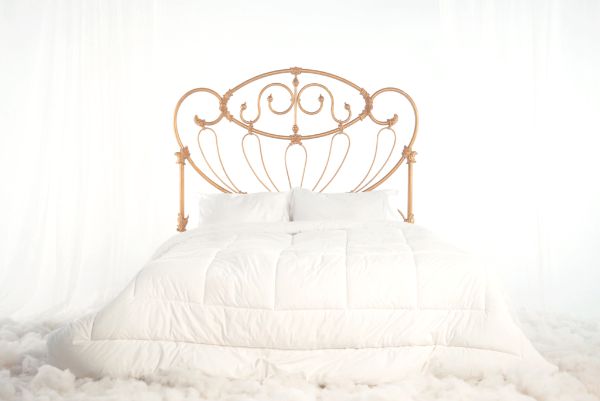When it comes to creating a cozy and inviting bedroom, your choice of bedding plays a crucial role. Among the numerous options available, duvets, comforters, and quilts are some of the most popular choices.
But what exactly are they, and how do they differ? Let’s dive into the world of bedding to unravel the mysteries of duvets, comforters, and quilts.

Table of Contents
The Basics
Before we delve into the differences, let’s establish a basic understanding of each bedding option:
Duvet: A duvet is a soft, flat bag filled with materials such as down, feathers, or synthetic fibers. It’s designed to be used with a duvet cover, which acts as a protective and decorative outer layer.
Comforter: A comforter is a thick, fluffy blanket filled with synthetic fibers, down, feathers, or a combination of these materials. Comforters are typically stitched or quilted to keep the filling evenly distributed.
Quilt: A quilt consists of three layers: the top layer (often decorative and made of fabric patches or panels), a layer of batting (the filling), and a backing fabric. Quilts are stitched together in a decorative pattern, creating a cozy, layered blanket.
Now that we have a foundation, let’s explore the key differences between these bedding options.

Warmth and Insulation
Duvet
Duvets offer excellent insulation and warmth, primarily depending on the type and amount of filling they contain. Down-filled duvets tend to provide superior insulation, making them ideal for colder climates. You can choose different duvet weights to suit your warmth preferences.
Comforter
Comforters are designed to keep you warm and cozy. They are typically thicker than duvets and are ideal for colder seasons. Like duvets, comforters come in various weights to accommodate different temperature preferences.
Quilt
Quilts offer a moderate level of warmth and are suitable for milder climates or as an extra layer in the winter. Their warmth primarily depends on the thickness of the batting. Quilts often serve as decorative bed coverings more than for intense insulation.
Maintenance and Care
Duvet
Duvets are relatively easy to maintain. The duvet cover can be removed and washed separately, making it a breeze to keep your bedding fresh and clean. You can also fluff the duvet itself to maintain its loft and comfort.
Comforter
Comforters can be a bit more challenging to launder due to their size and thickness. Some may fit in standard washing machines, while others might require professional cleaning. Regular fluffing helps maintain their plushness.
Quilt
Quilts are typically easier to care for than comforters. They are often machine washable, and because they have a thinner profile, they can be easier to handle during laundry.
Aesthetic and Style
Duvet
Duvets allow for versatility in terms of style. You can change the duvet cover to refresh your bedroom’s look without replacing the entire bedding. Duvet covers come in various colors, patterns, and fabrics to suit your decor.
Comforter
Comforters also offer a range of style options, with many available in coordinated sets that include shams and decorative pillows. They can serve as a focal point in your bedroom decor.
Quilt
Quilts are known for their traditional and cozy aesthetic. They often feature intricate stitching patterns and can add a charming and rustic touch to your bedroom.
Versatility and Layering
Duvet
Duvets are versatile and can be used year-round by choosing the appropriate weight. In hotter months, you can opt for a lightweight duvet or use the duvet cover without the duvet itself for a cooler sleep.
Comforter
Comforters are also versatile, and many are designed for year-round use. You can adjust your bedding by adding or removing layers such as blankets or sheets.
Quilt
Quilts are often used as decorative layers on top of other bedding elements. They provide an additional layer of warmth and can be paired with other blankets or throws for added coziness.
Cost Considerations
Duvet
Duvets can vary in price depending on factors such as the quality of the filling material and the duvet cover’s fabric. Down-filled duvets tend to be more expensive than synthetic options.
Comforter
Comforters also come in a range of prices, with synthetic-filled comforters typically being more budget-friendly than those with natural down or feather fillings.
Quilt
Quilts are often an affordable bedding option, making them accessible to a wide range of budgets. The cost may vary based on the craftsmanship and materials used.
Duvet vs. Comforter vs. Quilt
| Aspect | Duvet | Comforter | Quilt |
|---|---|---|---|
| Warmth and Insulation | Excellent insulation, various weight options | Thick and warm, ideal for colder seasons | Moderate warmth, suitable for milder climates |
| Maintenance and Care | Easy with removable duvet cover | Challenging due to size, may require professional cleaning | Typically easy to care for |
| Aesthetic and Style | Versatile with a wide range of duvet covers | Stylish, often available in coordinated sets | Traditional and cozy, intricate stitching patterns |
| Versatility and Layering | Year-round use, adjustable with weight | Year-round use, layering with blankets or sheets | Decorative layer, pairs with other bedding elements |
| Cost Considerations | Varies based on filling quality and duvet cover | Varies, synthetic options are budget-friendly | Often an affordable bedding option |
Final Thoughts
In the duvet vs. comforter vs. quilt debate, the choice ultimately comes down to your personal preferences, climate, and aesthetic taste. Duvets are known for their warmth and versatility, comforters offer plushness and style, while quilts bring a timeless charm to your bedroom.
Consider your local climate, how you like to style your bed, and your comfort preferences when making a decision. Additionally, don’t forget to factor in maintenance and care, as some bedding options may be easier to clean and maintain than others.
Ultimately, there’s no one-size-fits-all answer, but with this guide, you’re better equipped to make an informed choice that suits your needs and helps you create the cozy bedroom of your dreams. Sweet dreams and happy bedding shopping!
